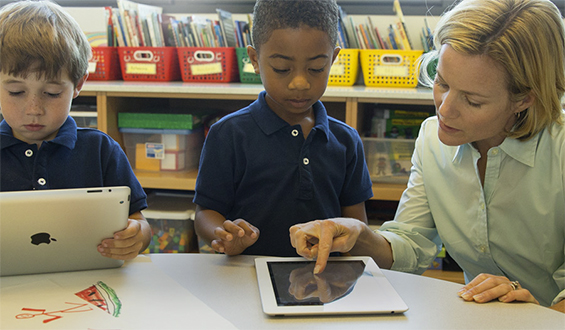Education
ContentWatch: How to Protect Students, Teachers and Schools in One-to-One Programs

By Clayton Ostler
Senior Director of Technology, ContentWatch
In my previous article, I discussed some dangers of one-to-one device programs at schools, especially when students can go around the school-protected network connections or when they take their devices home. Here are some additional solutions schools can implement to make sure their devices are secured enough to adequately protect students in one-to-one programs.
“True” filtering technologies
Students need access to websites that have research and learning content. Many of these websites, while having content that is valuable to the curriculum, may have inappropriate or distracting content, too. YouTube and Wikipedia are examples of these kinds of sites. Teachers need to allow students to research and view these sites but don’t want to give kids “free reign” on sites that could have inappropriate or time-wasting content.
Dynamic content filtering is one way that can solve this problem. Dynamic content filters analyze the page instantly before it’s delivered to the browser to analyze the content on the site and determine if it’s appropriate based on settings created by the administrator. There are many web filtering solutions available for mobile devices, and many methods of implementing filtering. Some methods include global proxies, VPNs, local filtering clients, and simple whitelist/walled garden solutions, DNS filtering etc. Dynamic filtering is a critical and often overlooked feature set.
Everywhere protection
The solution for protecting one-to-one devices requires more than an on-premise/gateway solution. Because one-to-one devices follow the student home and everywhere else they go, these devices need a locally installed solution that provides protection on all networks and in all locations.
Another important feature for consideration while protecting one-to-one devices is App Management. Protecting mobile devices and students requires more than just basic browser filtering because most Internet access on mobile devices comes from apps. Some research shows that students use apps for nearly 80% of their Internet activities. For this reason, administrators should use a solution that has app management features to prevent downloads of unauthorized apps, ensure appropriate use of authorized apps that are installed on the device and provide reporting features to both monitor and report what is happening with each app on each device.
Time Controls
Because one-to-one devices are taken home, schools should create policies to manage time spent on the devices. Parents don’t want to find out that their child is spending all night online or chatting with friends while using a school provided device. This leaves parents feeling vulnerable and increases the list of things parents need to monitor and manage.
Therefore, schools should install time control applications and programs and communicate their policies for the restrictions on these devices. Again, time control solutions are best managed and are more effective if they are installed at the device level rather than at the network level because as soon as the device is off the network, the time controls can be ineffective.
Physical Device Management
Lets face it, kids are “kids.” Handing out 1,200 tablets to an elementary school means that around 5% of these tablets will get misplaced. As part of managing devices, schools should have applications to remotely locate and lock these devices when they are misplaced or stolen. A web portal where an admin can see the GPS location of a device and remotely disable its use is critical. Many providers with mobile device management capabilities should be able to provide this type of a solution. When researching solutions, make sure the program has tamper-proof measures to stop kids from disabling the feature.
Content Management
Some one-to-one programs install specific content directly on the device. While it is convenient for content access to curriculum, the next time there is an update, it becomes problematic and expensive to collect all of the devices and update each machine. So, consider your content management needs. If the content is not going to change, you could install it once and it would be fine. However, if your content changes from time to time, it may be better to host the content on a school website or in the cloud so the content can be updated easily and accessed immediately by students.
One-to-one device programs are excellent ways to enhance the value of learning and to improve the way today’s students learn, especially since many students are already experts in using devices like laptops and tablets. As you deploy (or even improve) your one-to-one program, consider the potential pitfalls of giving devices to students.
However, solutions are available for every one of those pitfalls. Work with your IT director or solution providers to identify solutions that provide the comprehensive protection you will need. Most likely, those providers have already worked with another client to solve the same problem. If you implement the solution you needed up front, you’ll be able to focus on education instead of becoming a full-time device manager.
Author information
The post ContentWatch: How to Protect Students, Teachers and Schools in One-to-One Programs appeared first on Education News.


Comments (0)